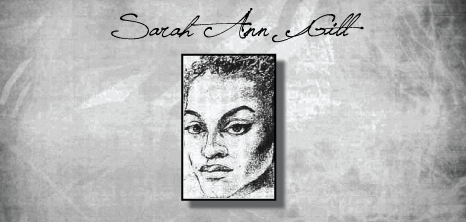|
Sarah Ann Gill (1795 - 1866)Sarah Ann Gill was born in 1795 to a black mother and a white father. Born in the midst of a racial society, she too had her fair share of challenges when it came to being socially accepted. Despite this, she possessed a unique ability to fight social ills without physical confrontations but rather, meth by using powerful and effective prayers to strengthen and redirect her focus and that of her church members.
The Road of PersecutionDespite the destroyed chapel and the great possibility that the battle wasn’t quite over, Sarah Ann and her sister-in-law Miss Christina Gill showed amazing strength of character by subsequently opening their homes to church members as places of worship in an effort to continue in their unwavering commitment to the faith. The continuation of the undertaking of such heroism on their parts didn’t sit well at all with authorities and the society at large and so Sarah Ann found herself in breach of the Conventiclers Act of 1664. This Act clearly stated that no more than five persons could gather for worship at any time, unless in a ‘licensed meeting place, led by a licensed preacher’.
A 28 year old widow, Sarah Ann became subject to a perpetual amount of threats and warnings for one year as she chose to stand by her beliefs even if it meant risking her very own life. Such faith provided the necessary backbone that she eagerly displayed for her members to hold firm to in the face of adversity. Her worship meetings were deemed “illegal meetings” by the Law Courts and so she received two prosecutions. Magistrates repeatedly and annoyingly questioned her about supposedly harboring guns and ammunition in her home and eventually she was prosecuted by the House of Assembly. As a claim to her own power and true independence she defended herself and defied authorities. Her ability to take a stand and speak her truth clearly and convincingly could have only been an absolute show of personal power and self confidence on her part.
Sarah Ann was buried on February 25, 1866 in the small cemetery at the back of James Street chapel. Back in 1893, a large wooden structure was built as a place of worhsip. It was replaced by a new Gill Memorial Church built at Fairfield Road, Black Rock, St. Michael in the late 1980s. Sarah Ann’s strength, faith, perseverance and tireless commitment to religious freedom can only serve as a tremendous source of inspiration for all women in Barbados and Barbadians on a whole.
|



